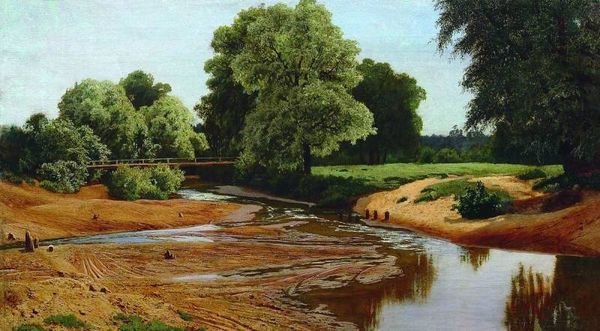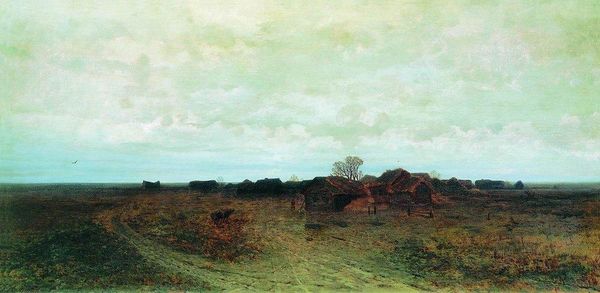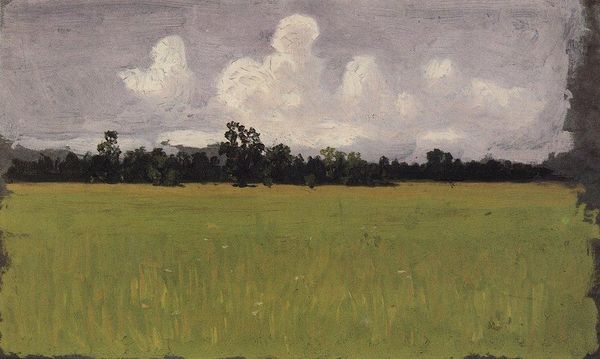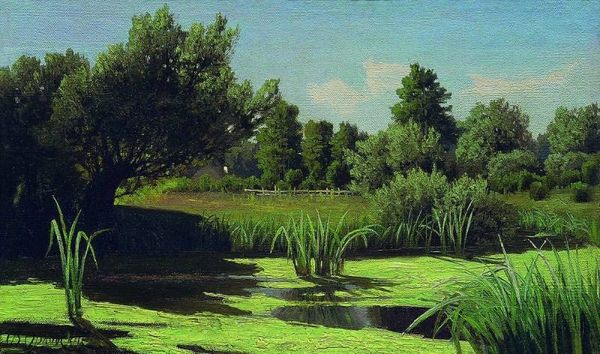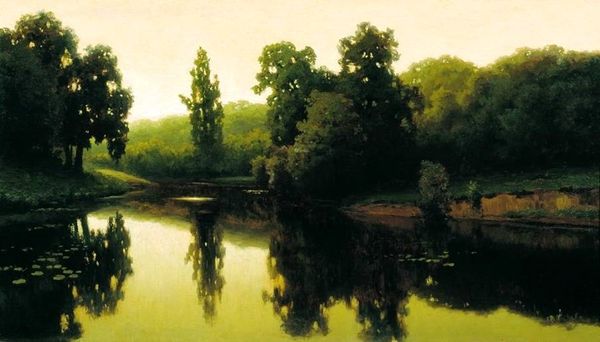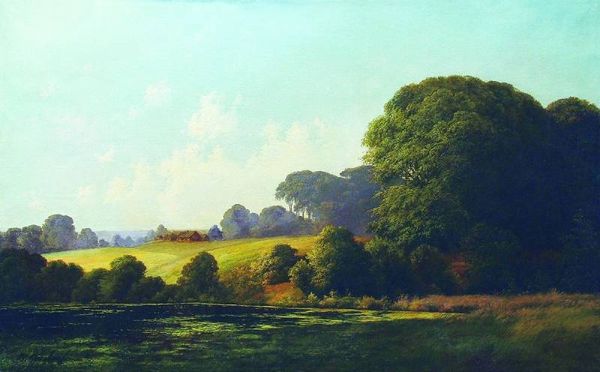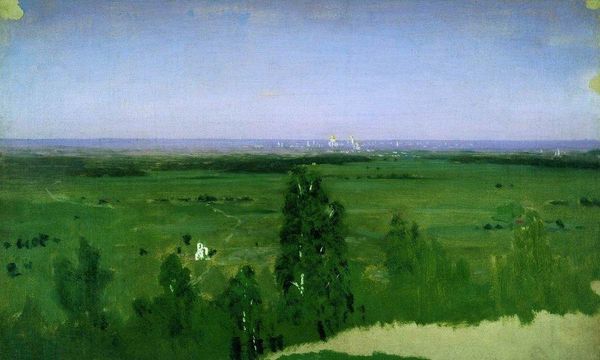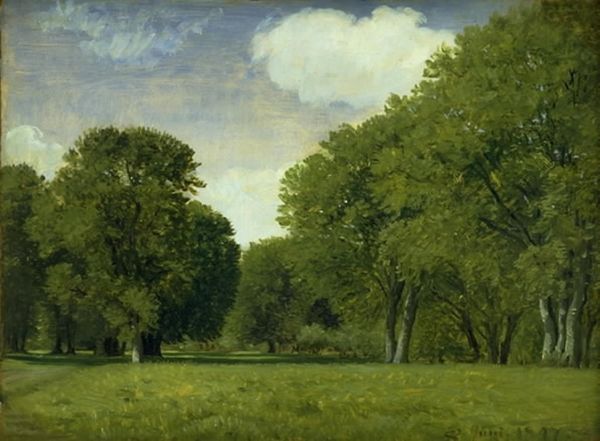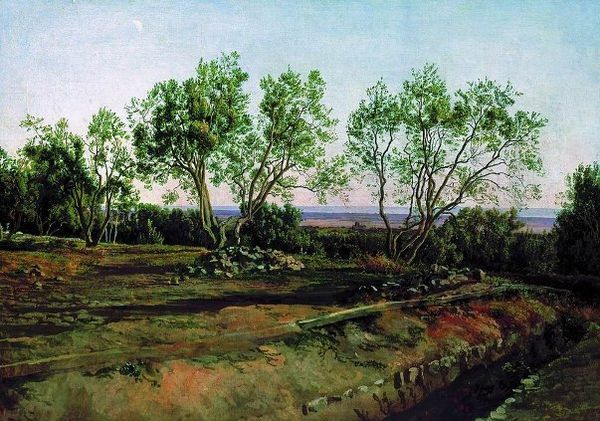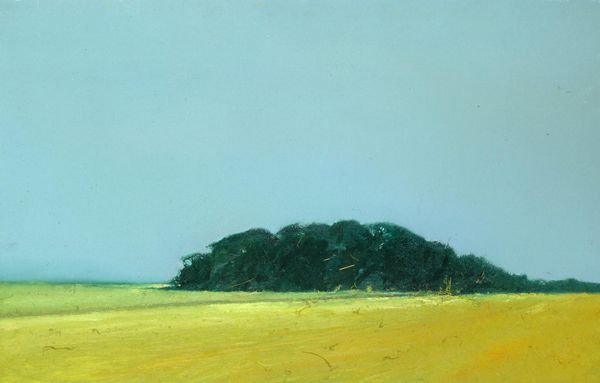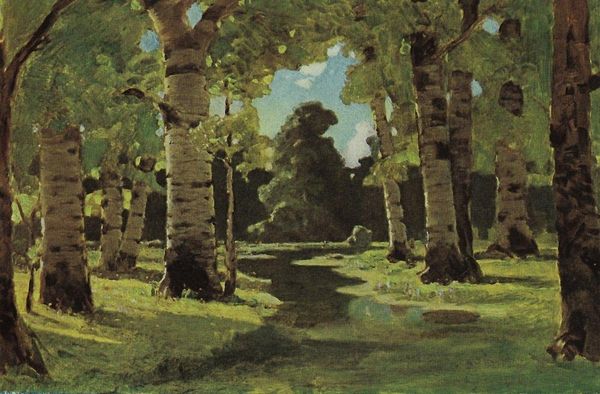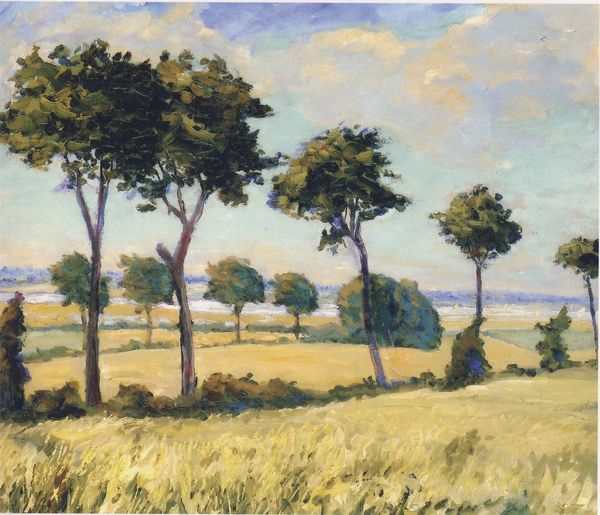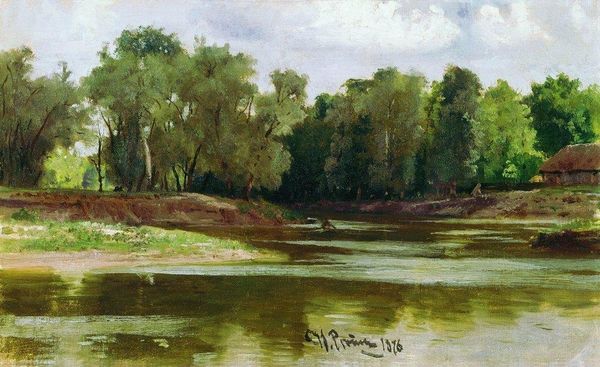
Dimensions: 83 x 164 cm
Copyright: Public domain
Editor: We're looking at "Oaks," an oil painting from 1905 by Arkhyp Kuindzhi. There's such stillness in this scene; I'm immediately drawn to the contrast between the imposing trees and the serene sky. How do you interpret this work? Curator: I see a powerful statement about rootedness and resilience. Consider the socio-political climate in early 20th century Russia, marked by upheaval and social unrest. Kuindzhi, with his Ukrainian Greek background, likely felt these tensions acutely. The oaks, these solid, enduring figures, can be viewed as symbols of cultural identity, steadfastness amidst societal instability. Editor: So the trees are like… silent witnesses to history? Curator: Precisely. Think about how land ownership and the peasantry were being reimagined during that period. Kuindzhi painted predominantly landscapes. The landscape becomes a space where these societal shifts can be subtly explored. What kind of dialogue do you think that Kuindzhi tries to create? Editor: A dialogue about the importance of a collective experience of a common rural past, maybe? In the piece I see that connection to nature as a symbol of strength and unity, something that transcends political division. But isn’t this painted in the Impressionist style? How can art serve as a social statement with this style? Curator: I encourage you to not consider style as a barrier to communicating meaning. The painting style might seem apolitical, even ornamental, but even Impressionism was a break away from Academic conventions, which is in itself a political move. But there are also deeper layers; the interplay of light and shadow can represent the chiaroscuro of life, a nation at odds. Also, consider plein-air painting: isn't bringing the studio to the outside world already about valuing what's on the ground? Editor: That's fascinating! I never considered the implications of working en plein air in this context. I will keep that in mind as I keep developing my sensitivity to different artistic styles. Curator: Thinking of this painting as a visual archive reflecting the soul of a culture that strives to remember a glorious rural past will definitely take you one step forward.
Comments
No comments
Be the first to comment and join the conversation on the ultimate creative platform.
